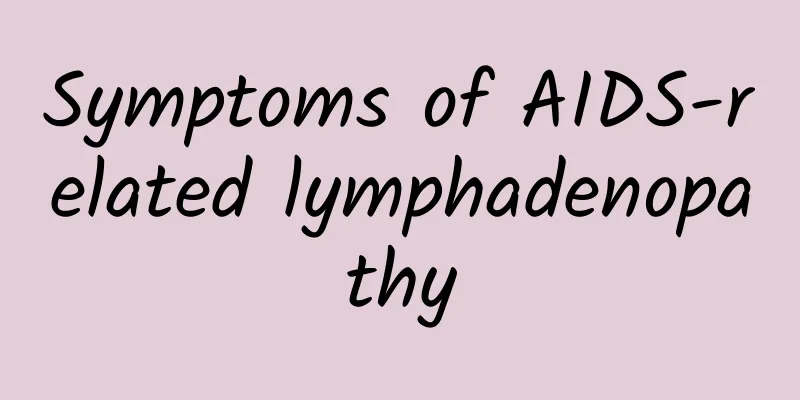Symptoms of AIDS-related lymphadenopathy

|
AIDS-related cervical lymphadenopathy is one of the early clinical manifestations of AIDS. It is caused by the human immunodeficiency virus (HIV) invading the lymph nodes in the neck. The course of the disease is long, with persistent lymph node involvement and gradual enlargement, often accompanied by multiple lymph node enlargement such as the groin, as well as fever, weight loss, fatigue, and decreased white blood cell count. Symptoms of AIDS-related lymphadenopathy Swollen lymph nodes in the neck are one of the common symptoms of AIDS. They can occur in all stages and may be the only manifestation during the asymptomatic period. In the early stages of AIDS, 86% of cases develop cervical lymph node enlargement, which often manifests as persistent and persistent enlargement, often accompanied by enlargement of superficial lymph nodes in other parts of the body, such as the axillary, groin, submandibular, suboccipital, and medial epicondyle lymph nodes. It may also be accompanied by enlargement of deep lymph nodes, such as mediastinal and hilar lymph nodes, mesenteric and retroperitoneal lymph nodes, etc. Physical examination: The characteristics of cervical lymph nodes are different in different stages of the disease. In the early stages of AIDS, cervical lymph node enlargement is often symmetrical, mobile, and elastic, with a size of 0.5 to 2 cm, often without pain or tenderness, and lasts for a minimum of 3 to 6 months. Pathological diagnosis1. Follicular hyperplasia stage (stage 1): In the early stage of infection and the chronic persistent stage, lymph node lesions are mainly reactive hyperplasia: follicles proliferate significantly, with irregular map-like shapes, and the mantle zone becomes thinner or disappears; the germinal center expands; due to the destruction of dendritic cells in the follicular center by HIV, "follicular dissolution" may occur; this pathological change is not unique to AIDS. 2. Follicular degeneration stage (stage 2): As lymph node lesions progress, the follicles degenerate. At this time, the follicular central cells gradually decrease, and the interstitial cells proliferate, forming a concentric layered structure with certain characteristics, such as "onion skin". 3. Follicular disappearance stage (stage 3): The lymph node structure is disordered, the number of follicles is significantly reduced, and histiocytic proliferation is observed, among which are scattered lymphocytes, plasma cells and immunoblasts. Postcapillary venous proliferation is often observed in this stage. 4. Lymphocyte depletion stage (stage 4): The lymph node structure is completely destroyed, the number of lymphocytes is significantly reduced, and they are replaced by diffuse or nodular proliferation of tissue cells, with or without fibrosis. Follicular degeneration and disappearance means the decline of immune function, so these two stages are often accompanied by tuberculosis and (or) opportunistic infections. |
<<: How to eliminate acute lymphadenitis
>>: Does lymph node puncture hurt?
Recommend
Things to note before the physical examination
Many friends will consciously go to the hospital ...
What is pulmonary hypertension? Do you understand it after this introduction?
When it comes to pulmonary arteries, few people r...
Calcium gluconate anti-allergy usage
Calcium gluconate is a relatively common calcium ...
Can dandelion and wormwood be drunk together?
Mugwort has the effect of dispelling cold and dam...
The dangers of double eyelid liposuction
If your double eyelids feel thicker, it is becaus...
Sitting abdominal pain
Many women often experience lower abdominal diste...
Right carotid artery occlusion
There are two main arteries around the human neck...
What are the matching requirements for bone marrow transplantation?
Although bone marrow transplantation plays a posi...
How to treat cholecystitis
Cholecystitis is actually what we know as cholecy...
What causes black, loose, and sticky stools?
We eat a lot of food containing whole grains every...
Pain in feet when walking
There are many acupoints on the soles of our feet...
Can cranberries really cure gynecological diseases?
Cranberry is a relatively common fruit with relat...
What causes oily body?
Because everyone's physique is different and ...
How to deal with people who like to sulk
Being sulky is a personality trait. If you sulk o...
Can I take a shower before vaccination?
Vaccination is what we call injections in spoken ...









